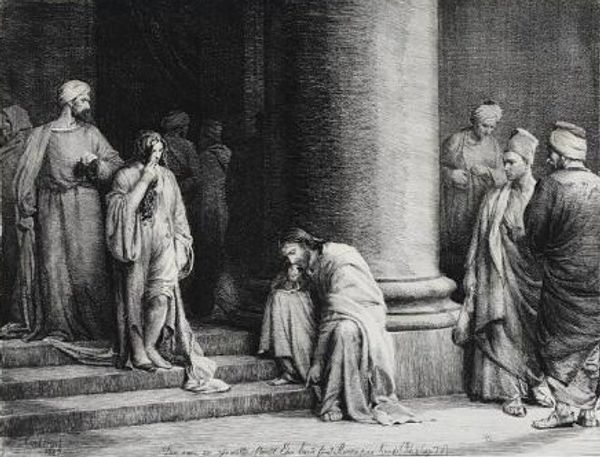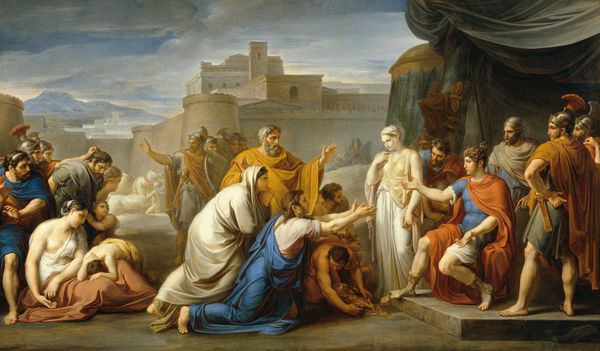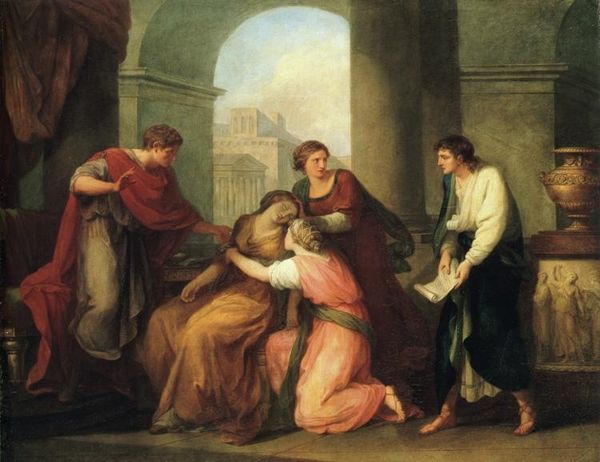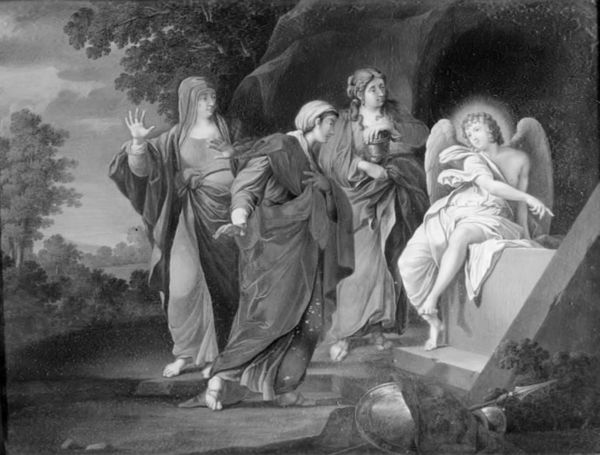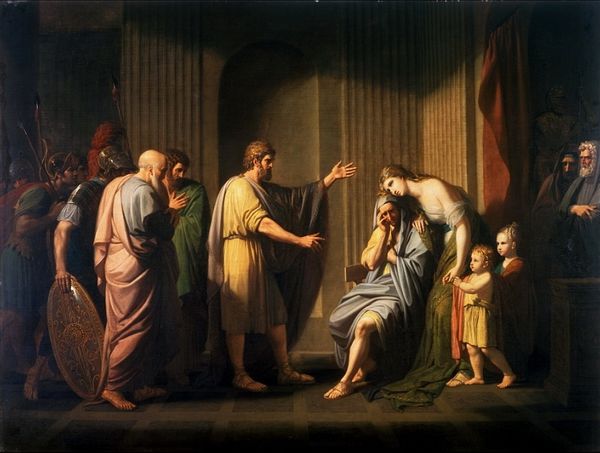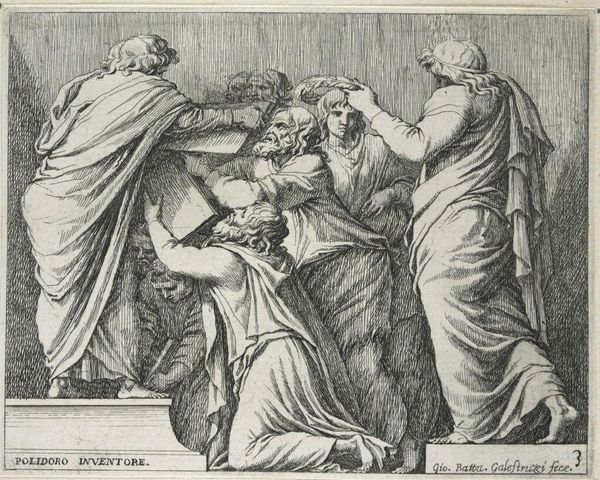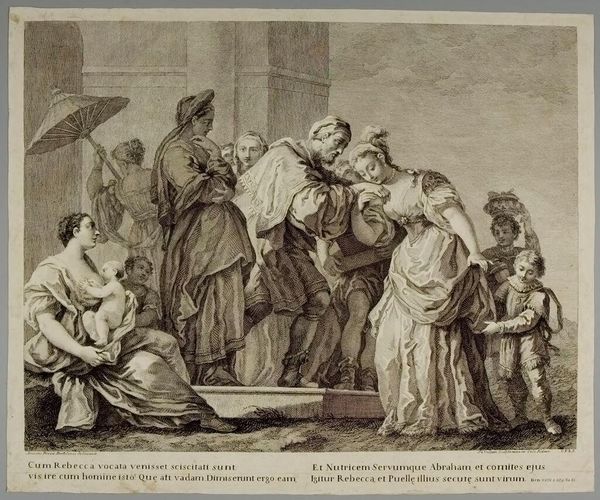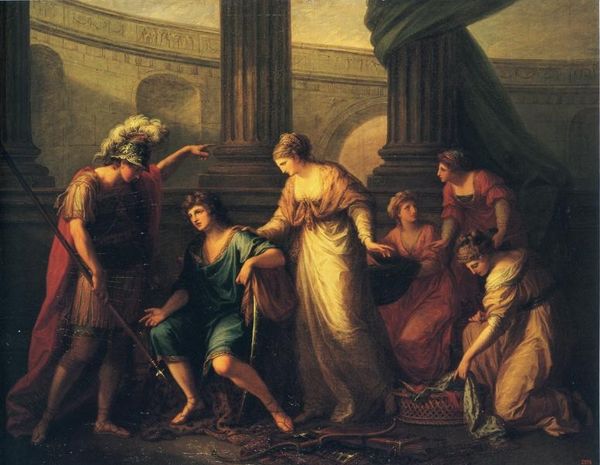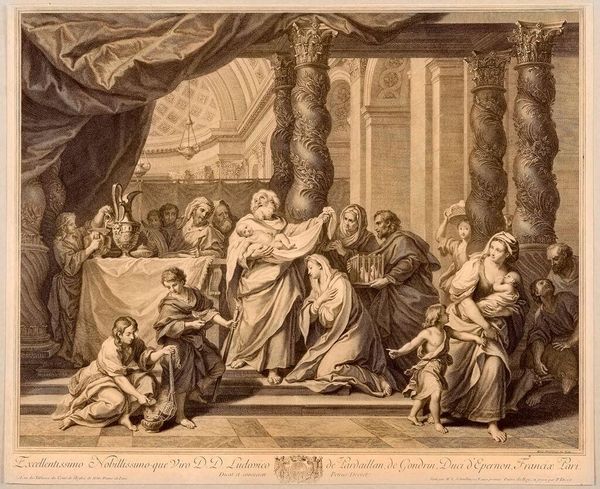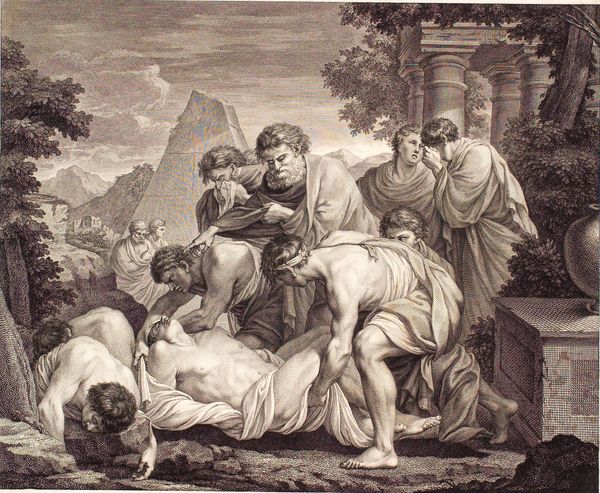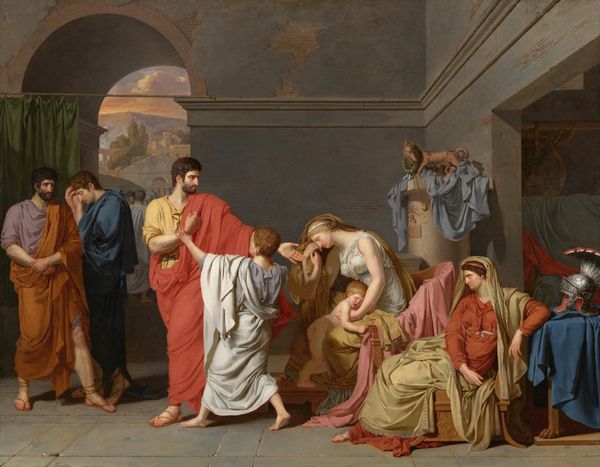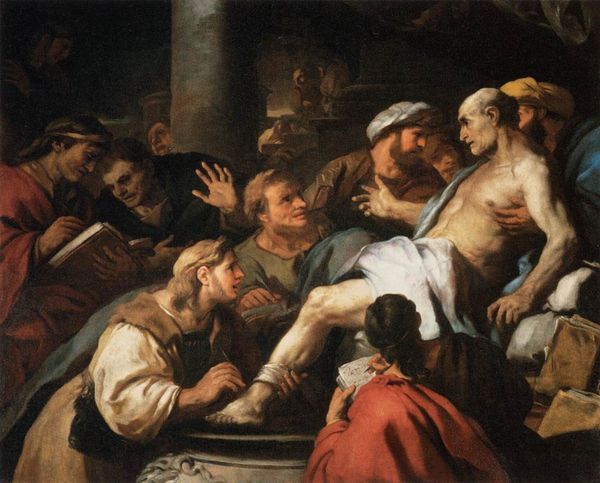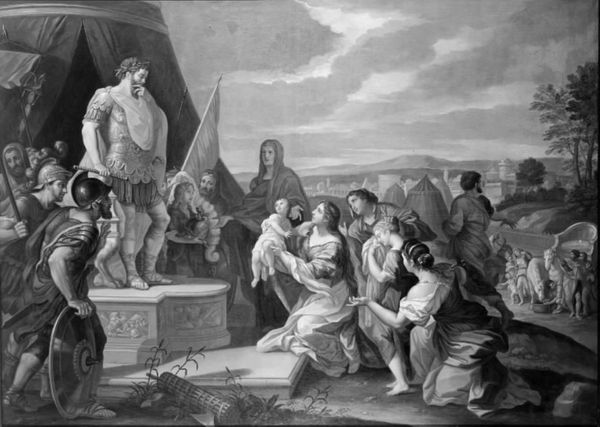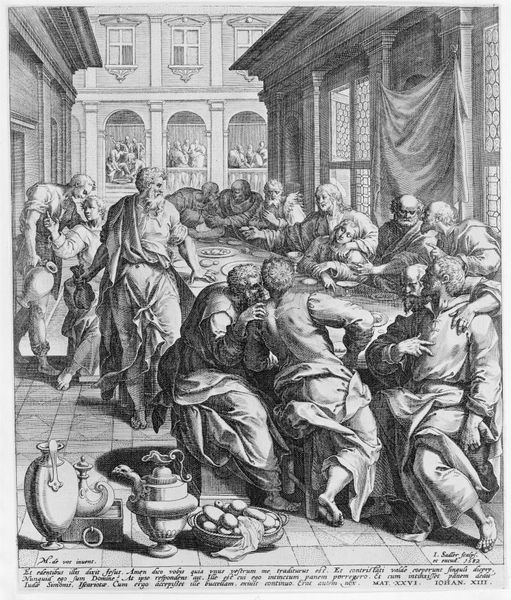
painting, oil-paint
#
neoclacissism
#
allegory
#
painting
#
oil-paint
#
figuration
#
oil painting
#
group-portraits
#
romanticism
#
mythology
#
history-painting
Copyright: Public domain
Curator: Before us is Angelica Kauffmann’s history painting *Alcestis*, presenting a classical narrative scene. Its colors are quite soft and it immediately communicates a mood of mournful resignation. Editor: The folds and draping of the fabrics strike me first, though. All those togas and gowns must have taken hours to render on what appears to be a relatively small canvas. What can you tell me about the context of its production? Curator: Kauffmann, known for her neoclassicism, certainly commands attention with her compositional arrangements. The focal point resides with Alcestis as she says farewell to her family. It evokes a profound sense of sacrifice and stoicism. I am most struck by how all figures, frozen in the moment, point to Alcestis: their emotional compass, the vortex. Editor: Yes, Kauffmann's technique, and the labour of making a grand history painting accessible to a wider audience, intrigues me. Look at the very specific way in which garments are dyed and draped; the pigments that could only be accessed through trading routes, all tell a material story. We must also not forget her own social mobility and position as a female artist working within rigid artistic structures and class disparities. Curator: Precisely. Semiotically, it seems a testament to love and duty, drawing deeply from classical mythology where Alcestis offered her life in place of her husband, King Admetus. Editor: But the real social meaning is how such a narrative can be put to use as a visual material object to promote ideals about heroism and self-sacrifice, no? Painting this story certainly meant more to Kauffmann and her commissioners than the mere representation of myth. Curator: Agreed. And isn't it striking to note Kauffmann's skill in balancing idealized forms with deeply felt emotional displays? Editor: Exactly, the oil and canvas themselves served as a potent conduit for disseminating morality and societal ideals during that period, reaching beyond the elite through engravings and copies. The act of rendering that canvas… it's about more than just neoclassicism, it shows us the material implications of how art gets woven into society's values. Curator: Food for thought. Thank you for your time and interesting perspective. Editor: Indeed. Seeing such grand narratives reframed through a lens of materials and processes grants an interesting layer of insight to these canonical paintings.
Comments
No comments
Be the first to comment and join the conversation on the ultimate creative platform.
